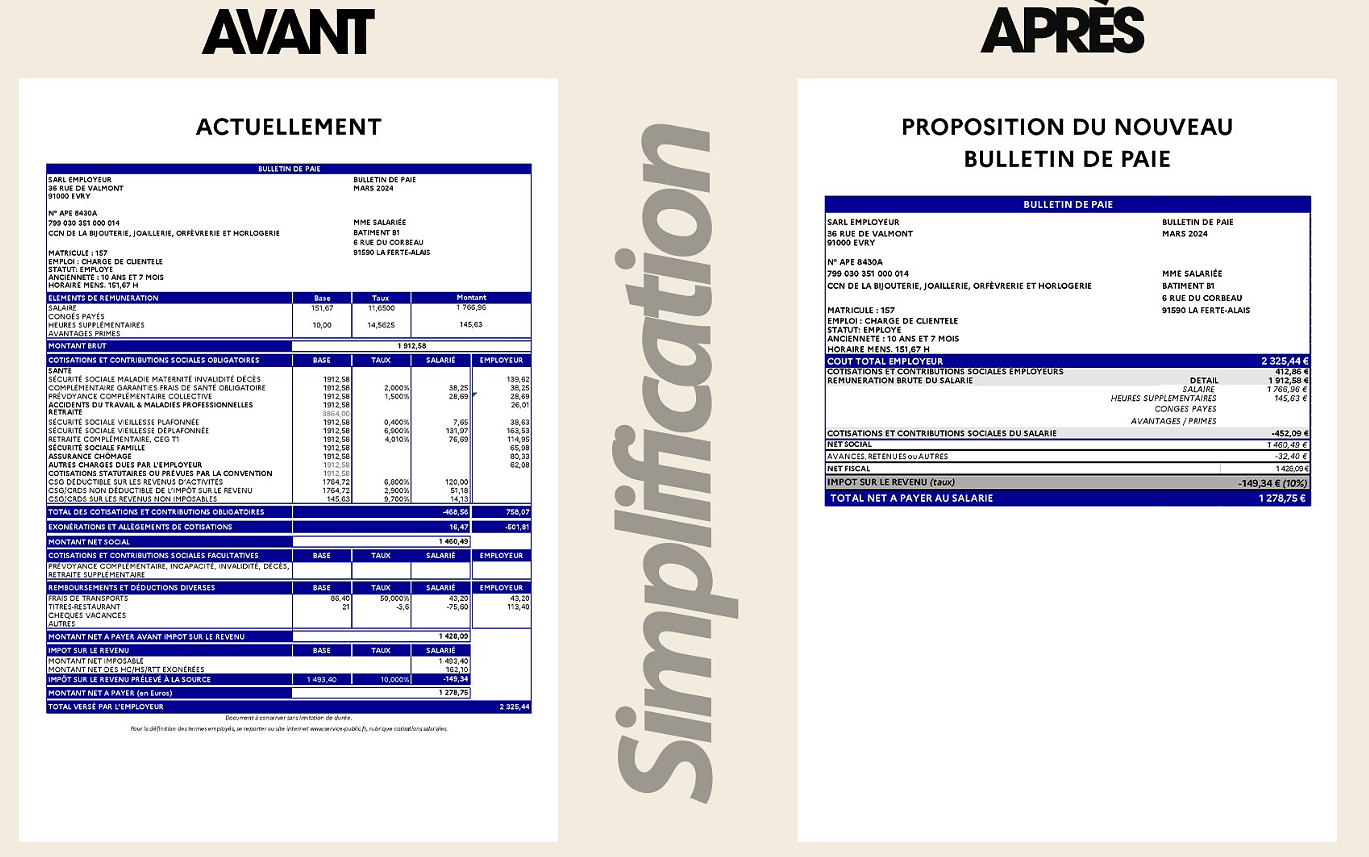in the Spring of 2018 completed approximately 80.670 students secondary schools. It is 800 more than the year before. This is the fifth year in a row that the proportion of students who take high school diploma within three years of the national program is increasing.
In 2018, the proportion increased with the degree to sek 76.1 per cent, compared with 75.2% the year before.
" we think This is incredibly fun. Now, we dare say that there is a steady upward trend, " says Anna Westerholm, head of department at the Swedish national agency for Education.
She points out that there are clear statistics that show that those who do not complete their secondary education do worse in the workplace.
It is above all at the college preparatory programmes as a proportion with the degree becomes larger. Which increases the rate of graduation in all the programmes. The largest increase has the business and management programme.
within three years to a greater extent than men. Especially great was the difference in the college preparatory program. With 80.6 per cent of the women against 74.8 per cent of men graduated within three years. Women are more likely than men to graduate within three years at all of the college preparatory program.
" What it depends on, I can not answer. Overall, girls had a higher score. Many have pondered about why the boys manage worse in school.
On the vocational programs will take slightly more men than women graduated within three years (72,4 compared with 71.5 per cent), but it varies considerably between different vocational programmes.
Then gymnasiereformen 2011, there are five cohorts who left upper secondary school. The proportion of students who took the exam has increased from 71,4 per cent in 2014 to sek 76.1 per cent in 2018. This is an increase of about 4,000 students – or 4.7 percentage points in five years.
One explanation for the growing number of students finish their high school studies can, according to the Agency's analysis may be that fewer students switching programs at the high school. Programbyten can often lead to that the students need longer time than three years to complete the studies.
can be to the average tariff from primary school increased for each elevkull who started upper secondary school since 2011.
– Both of these factors suggest that students come better prepared from the primary school, which, in turn, allows more take the exam within the allotted time, " says Anna Westerholm.
There is a desperate shortage of trained guidance counsellors. We need to make sure to quickly get out more.
This is despite the fact that in many years brought criticism of how the student works in the Swedish school. Last for a couple of weeks ago, the government investigation ”future choice” on the major shortcomings when it comes to access to guidance and counselling – and also large variations in the guidance offered.
a Good example is, of course, but in general the student in the day of a marginalised phenomenon in which the practitioner often feels very alone at school. This despite the fact that the curriculum and the education act says that the guidance should permeate the education in general, " says Marie-Hélène Ahnborg, the government's special investigator.
– another big problem is that there is a desperate shortage of trained guidance counsellors. We need to make sure to quickly get out more.
a number of proposals to strengthen the study - and vocational guidance. Among other things, to clarify all students ' right to both general and individual guidance.
The general guidance shall be included in the teaching and give the students knowledge about the work.
– We also proposes a new mandatory element which we call choices for the future where students receive knowledge about how a labour market works, how it is done in a workplace, what professions there are and where they re-equipped with the skills to manage the choices and transitions at large, " says Marie-Hélène Ahnborg.
The individual guidance is in the individual learner meeting face-to-face with the practitioner. Where the learner talk about himself, what you like and what you are interested in. Also it proposes the investigation of a reinforcement.
high school students take their high school diploma within three years, it is still a quarter who do not. It is a well known fact that the person who has no high school diploma today has more difficult to get work.
About 7,000 students miss every year high school graduates by a whisker. It may be because they received the grade of F, that is to say, a grade in only one or a few courses.
For the group, you might think that it would be fairly easy to supplement their high school education at the community college to get a degree, but few are doing it.
the national agency for Education has in a study presented in november, followed up the more than 7.300 students in the spring of 2015 left upper secondary school in a national program with a failing grade in only one or a few courses. It made that they got a studiebevis in lieu of degree.
of those students chose to complete their missed results at the adult education centre within one and a half years after they left high school. And only one in twenty of the students took out a high school diploma in adult education.
" Over time, we have seen that it is roughly the same proportion as the just miss the high school diploma. As long as these pupils are in secondary schools it is the school's responsibility to ensure that they get the support they need to achieve their degree. You must have a systematic quality control so that in due time, see which students are at risk of not attaining a degree, " says Marcello Marrone, head of the vuxenutbildningsenheten on the Swedish national agency for Education.
– If a student, for example, received an F the first mattekursen, it must receive the support it needs to cope with it in time. Then it is too late, " he says.
the Aim of komvuxelever is not always to get a degree. Perhaps it is more about taking the courses you need to get out of the job.
doing well at school, despite these efforts, not the objective mean Marcello Marrone to the school principal shall inform the student of the options available to achieve a high school diploma in the adult education. This is within the context of the general studievägledningsuppdraget.
– It is also important to inform to all the students a couple of years ago have the right to complete with the completion of professional courses in adult education, " he says.
went on to adult secondary education from the college preparatory program, qualified one-half of a degree, but only 29% took the.
For students on the vocational programs that continued in adult education, the figures were lower. Approximately 40% qualified for the exam but only 10% took it.
– We would need to djupintervjua students to know what it depends on. We do not want to speculate, and there are certainly lots of explanations. For example, students in adult education are not always aware that they must contact the municipality to get her master's degree. So it is not in high school.
– the Goal of the komvuxelever is not always to get a degree. Perhaps it is more about taking the courses you need to get out of the job. Some might not want to take out the degree of strategic reasons, you want to keep the door open to read additional courses, " says Marcello Marrone.
The students who go on to adult education reading in particular, mathematics, Swedish and English. Mathematics is the subject that the greatest proportion have problems with in high school, but also in adult education.

 His body naturally produces alcohol, he is acquitted after a drunk driving conviction
His body naturally produces alcohol, he is acquitted after a drunk driving conviction Who is David Pecker, the first key witness in Donald Trump's trial?
Who is David Pecker, the first key witness in Donald Trump's trial? What does the law on the expulsion of migrants to Rwanda adopted by the British Parliament contain?
What does the law on the expulsion of migrants to Rwanda adopted by the British Parliament contain? The shadow of Chinese espionage hangs over Westminster
The shadow of Chinese espionage hangs over Westminster Parvovirus alert, the “fifth disease” of children which has already caused the death of five babies in 2024
Parvovirus alert, the “fifth disease” of children which has already caused the death of five babies in 2024 Colorectal cancer: what to watch out for in those under 50
Colorectal cancer: what to watch out for in those under 50 H5N1 virus: traces detected in pasteurized milk in the United States
H5N1 virus: traces detected in pasteurized milk in the United States What High Blood Pressure Does to Your Body (And Why It Should Be Treated)
What High Blood Pressure Does to Your Body (And Why It Should Be Treated) “I’m interested in knowing where the money that the State takes from me goes”: Bruno Le Maire’s strange pay slip sparks controversy
“I’m interested in knowing where the money that the State takes from me goes”: Bruno Le Maire’s strange pay slip sparks controversy Despite the lifting of the controllers' strike, massive flight cancellations planned for Thursday, April 25
Despite the lifting of the controllers' strike, massive flight cancellations planned for Thursday, April 25 The right deplores a “dismal agreement” on the end of careers at the SNCF
The right deplores a “dismal agreement” on the end of careers at the SNCF The United States pushes TikTok towards the exit
The United States pushes TikTok towards the exit Saturday is independent bookstore celebration
Saturday is independent bookstore celebration In Paris as in Marseille, the Flames ceremony opens to fans of rap and hip-hop
In Paris as in Marseille, the Flames ceremony opens to fans of rap and hip-hop Sale of the century for a mysterious painting by Klimt, in Austria
Sale of the century for a mysterious painting by Klimt, in Austria Philippe Laudenbach, actor with more than a hundred supporting roles, died at 88
Philippe Laudenbach, actor with more than a hundred supporting roles, died at 88 Skoda Kodiaq 2024: a 'beast' plug-in hybrid SUV
Skoda Kodiaq 2024: a 'beast' plug-in hybrid SUV Tesla launches a new Model Y with 600 km of autonomy at a "more accessible price"
Tesla launches a new Model Y with 600 km of autonomy at a "more accessible price" The 10 best-selling cars in March 2024 in Spain: sales fall due to Easter
The 10 best-selling cars in March 2024 in Spain: sales fall due to Easter A private jet company buys more than 100 flying cars
A private jet company buys more than 100 flying cars This is how housing prices have changed in Spain in the last decade
This is how housing prices have changed in Spain in the last decade The home mortgage firm drops 10% in January and interest soars to 3.46%
The home mortgage firm drops 10% in January and interest soars to 3.46% The jewel of the Rocío de Nagüeles urbanization: a dream villa in Marbella
The jewel of the Rocío de Nagüeles urbanization: a dream villa in Marbella Rental prices grow by 7.3% in February: where does it go up and where does it go down?
Rental prices grow by 7.3% in February: where does it go up and where does it go down? Sale of Biogaran: The Republicans write to Emmanuel Macron
Sale of Biogaran: The Republicans write to Emmanuel Macron Europeans: “All those who claim that we don’t need Europe are liars”, criticizes Bayrou
Europeans: “All those who claim that we don’t need Europe are liars”, criticizes Bayrou With the promise of a “real burst of authority”, Gabriel Attal provokes the ire of the opposition
With the promise of a “real burst of authority”, Gabriel Attal provokes the ire of the opposition Europeans: the schedule of debates to follow between now and June 9
Europeans: the schedule of debates to follow between now and June 9 These French cities that will boycott the World Cup in Qatar
These French cities that will boycott the World Cup in Qatar Montpellier-Nantes: at what time and on which channel to watch the Ligue 1 match?
Montpellier-Nantes: at what time and on which channel to watch the Ligue 1 match? Ligue 1: Luis Enrique leaves many PSG players to rest in Lorient
Ligue 1: Luis Enrique leaves many PSG players to rest in Lorient Football: Deschamps, Drogba, Desailly... Beautiful people with Emmanuel Macron to play with the Variétés
Football: Deschamps, Drogba, Desailly... Beautiful people with Emmanuel Macron to play with the Variétés Football: “the referee was bought”, Guy Roux’s anecdote about a European Cup match… with watches and rubies
Football: “the referee was bought”, Guy Roux’s anecdote about a European Cup match… with watches and rubies


















